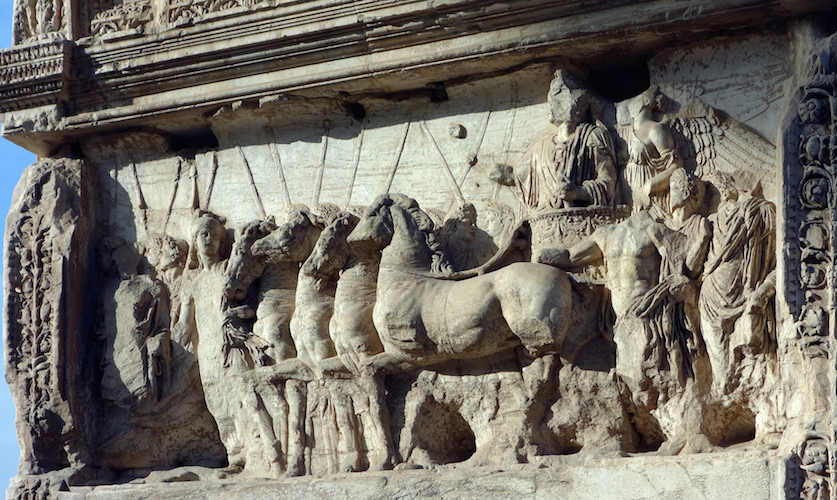

It’s speculated that the name for the city in which this mosaic was found derives from their an indigenous or Semitic word meaning ‘black’.
Notice that the animals (esp. the giraffe = cameleopard) are African not exclusively “Indian.” Notice the emphasis given to the textured hair of three of the four captives. Notice the purple stripes on two of the captives garments and the diadem marking them as high status prisoners.
How would this read to a Roman veteran assigned to this colony or the children of such veterans as they lived in a north African landscape? The artist makes a clear distinction between the heroic/divine as white/pale skinned, the tanned/brown of the fauns and satyrs (non-human), and the black/dark brown of the bound captives. The image of Dionysus esp. Victory holding a crown above his head and riding in the chariot recalls imperial triumphal imagery.



—
Blanchard-Lemée, Michèle. “Dionysos et la victoire: variations sur un thème iconographique à Sétif et à Djemila.” Comptes Rendus / Académie des Inscriptions et Belles-Lettres, no. 1 (2001): 529-543. Doi: 10.3406/crai.2001.16281